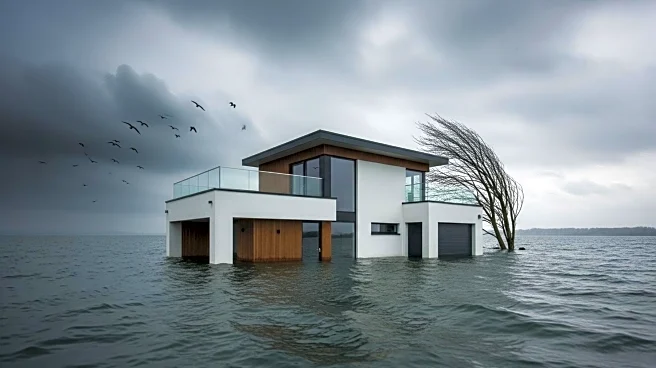What's Happening?
Charlotte has been identified as one of the top U.S. metropolitan areas for new home construction, according to a report by Realtor.com. The report highlights that new builds now constitute over 40% of listings in some leading markets, often priced below existing homes. This trend is particularly prominent in Southern and midsize cities such as Fayetteville, Boise, and Raleigh, which are experiencing significant growth in new construction. The increase in new home construction is seen as a critical response to the U.S. housing shortage, which is estimated to be nearly 4 million homes. The report analyzed the 100 largest U.S. metropolitan areas based on factors such as new-home share of listings, price premiums, climate risk, and buyer demand. Charlotte, along with other cities like Austin and Nashville, is noted for providing affordable, move-in-ready homes, which are essential in addressing the housing crisis.
Why It's Important?
The rise in new home construction in cities like Charlotte is significant as it addresses the pressing issue of housing affordability and availability in the U.S. With mortgage rates remaining high and many existing homeowners reluctant to sell, new construction provides a crucial source of inventory for potential buyers. This development is particularly beneficial for first-time buyers and families seeking affordable housing options. Additionally, the focus on sustainable building practices and climate-smart designs in new constructions offers long-term benefits in terms of energy efficiency and reduced environmental risks. The trend also reflects a broader economic shift, with investment in these areas potentially leading to job creation and economic growth.
What's Next?
As new home construction continues to rise, it is expected that more cities will adopt policies to support this growth. This includes reducing zoning barriers and promoting sustainable building practices. The involvement of local, state, and federal governments in enacting supportive policies will be crucial in maintaining this momentum. Additionally, the construction industry may see increased demand for skilled labor, prompting initiatives to promote careers in the trades. The ongoing development in these metropolitan areas could lead to a more balanced housing market, easing the affordability crisis and providing more families with the opportunity to achieve homeownership.
Beyond the Headlines
The increase in new home construction also highlights the potential for cultural and demographic shifts in these growing metropolitan areas. As more people move to these cities for affordable housing, there may be changes in community dynamics and local economies. The influx of new residents could lead to increased demand for services and infrastructure, prompting further urban development. Additionally, the focus on sustainable building practices may set a precedent for future construction projects, influencing industry standards and consumer expectations.










